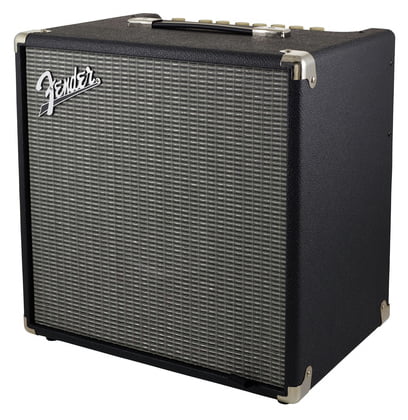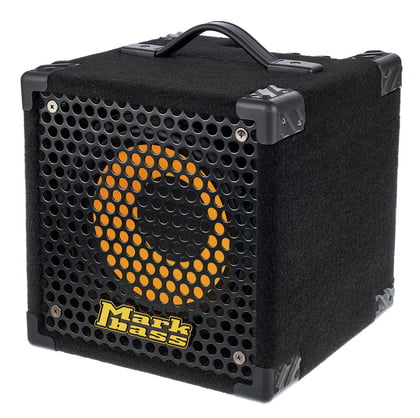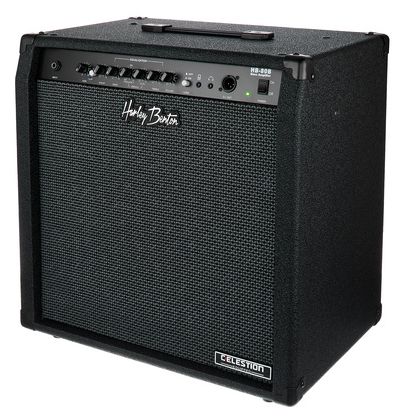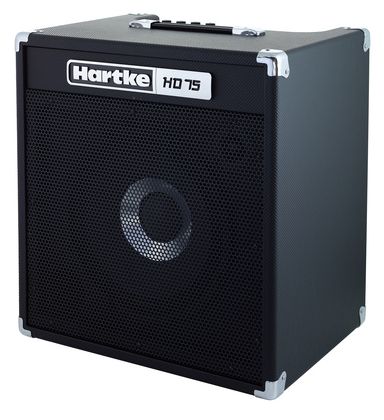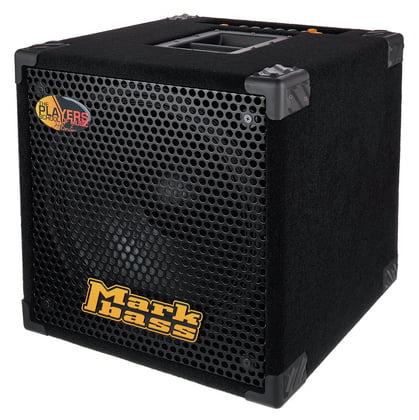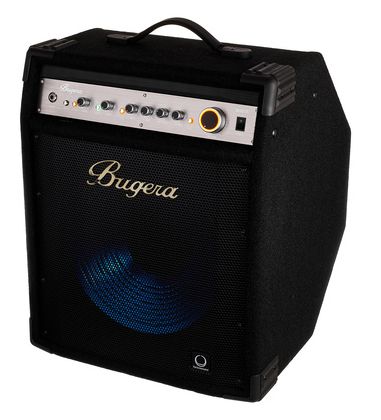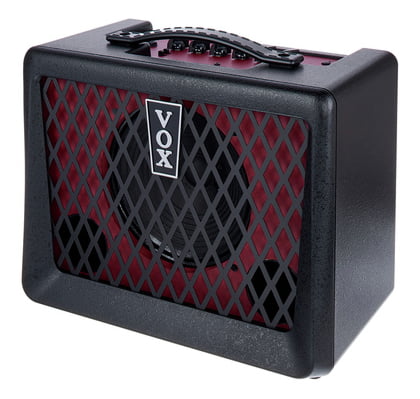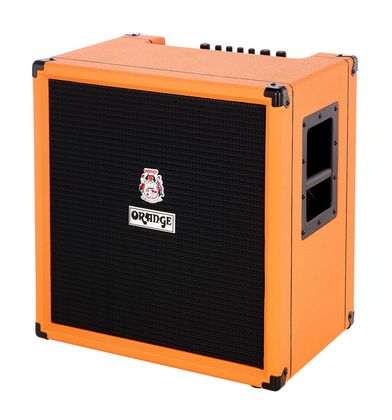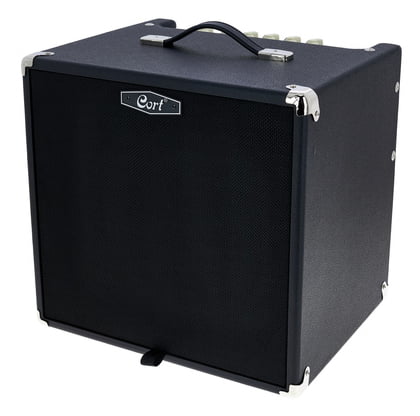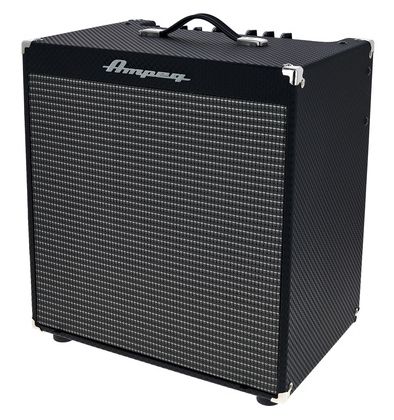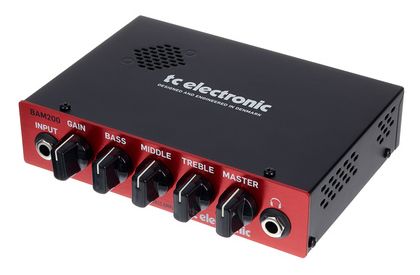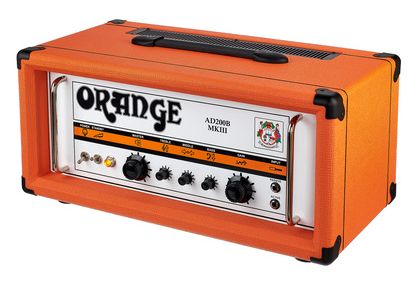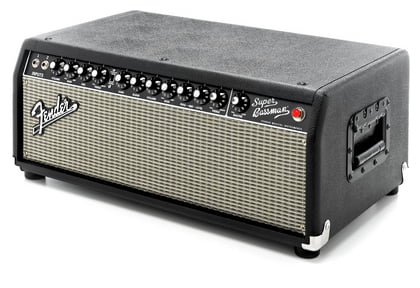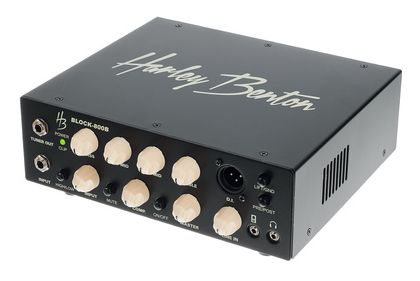Today’s article is about the 14 best Bass Amps for Church and Worship in 2024.
The article is full of information and focuses on some fantastic Bass Amplifier options from some of the very best companies to have ever graced the world of music and melody, including Fender, Markbass, Harley Benton, Hartke, Bugera, Vox, Orange, Cort, Ampeg, and TC Electronic.
Typically held in a solid wooden exterior, the primary purpose of an Amp is to add to the signal received from a bass guitar, an electric guitar, acoustic guitar, or another instrument, strengthening it through a loudspeaker(s).
Although most Amplifiers look quite similar, many factors need to be considered, such as the Amp’s power, the number of speakers, the size of each speaker, the channel count, and build quality. It should also be kept in mind that even the smallest Amp carries some weight, so portability may also play a part in your decision.
However, such equipment is usually kept in the private storage of Churches, so portability and build quality may not be major concerns if, of course, there are budget constraints. The primary focus should be on the quality and amplitude of the sound. The size of the Church may determine the sound harmonics, and most Amps come factory fitted with Equalizer panels to adjust the sound accordingly. The loudness of a speaker also needs to be considered. In this regard, 30W of power may be more than enough for a small or mid-sized venue, but larger venues may require more power.
A vast number of Amps exist in the market. This list aims to narrow it all down for you while assisting you with ample knowledge so you may make an informed decision.
14 Best Bass Amps For Church & Worship Music 2024
1. Fender Rumble 40
This unit by Fender is easily one of the most commonly used Bass Amplifiers ever.
In 1946, Fender was founded by Clearance Leonidas Fender in Fullerton, California. The company is among the most well-known worldwide, specializing in making extraordinary guitars such as the Telecaster, Stratocaster, Jazzmaster, and Jaguar.
Quite a number of Megastars from the present and the past gained the brand’s global popularity. Some notable names include Kurt Cobain, Jimi Hendrix, Jeff Beck, Rory Gallagher, Eric Clapton, Ritchie Blackmore, Buddy Holly, David Gilmour, and George Harrison.
Key Features:
- Hardware
The front of the unit hosts a shiny silver mesh spanning from right to left and top to bottom, in place to protect the speaker. The unit is also available with a black mesh. The top-left corner of the front panel carries a very prominent Fender logo.
You’ll find shiny metal guards at each corner, adding to the Amp’s overall durability and solid build quality. The top panel hosts a firm hard-rubber handle and a control panel with 8 control knobs, 4 small buttons, 2 LED indicators, and a jack.
The unit’s rear panel houses 3 jacks, a Line Out port with a small button, a power socket, and a power switch. ‘Rumble 40’ is printed near the top of this panel. The sides of the unit are plain, and the base only hosts 4 rubber supports near the corners.
- Control Panel – General Options
The control panel starts with a quarter-inch Input jack for your Bass guitar. Next, you’ll find a gain control knob which can be turned in either direction to regulate the level of the incoming signal. 3 small buttons labeled ‘Bright,’ ‘Vintage,’ and’ Contour.’
The button for Bright introduces shimmer and enhances the presence of the upper frequencies. The Vintage button adds a dark tone with increased harmonics. The Contour button adds a pleasing tone. This tone is ideal for slap-style playing and could be combined with ‘Overdrive.’
Then you’ll find 2 segments for Overdrive and Equalizer, followed by a ‘Maser’ control knob which adjusts the Amp’s overall volume. A bright battery status LED indicator is just above the brand’s logo.
- Control Panel – Overdrive & Equalizer Segment Controls
The Overdrive section of the panel includes 2 control knobs for ‘Drive’ and ‘Level,’ which can be adjusted to set the amount and the volume of the Overdrive. The Equalizer segment hosts 4 control knobs for ‘Bass,’ ‘Low Mid,’ ‘High Mid,’ and ‘Treble.’
These 4 bands of Equalizer allow you to set the overall tone. You can use these controls to compensate for the surrounding acoustics. Acoustics vary from place to place, so this segment should prove quite handy.
- Connectivity
The top right of the unit’s back panel houses 2 3mm jacks for ‘Aux In’ and ‘Phones,’ a quarter-inch jack for ‘FTSW,’ and a ‘Line Out’ port. The Aux In allows for an mp3 or CD player to be connected.
The Phones jack lets you use a stereo headset or headphones with a minimum impedance of 32 ohms. When this jack is in use, the speaker is disabled. It is advised that the volume is lowered when plugging in or plugging out headphones. Recording consoles or PA systems may be attached via the Line Out port.
- Speakers & Power
The Amp comes equipped with a single 10-inch Special Design Ceramic speaker with an impedance of 8Ω. The Amp requires 110W/ 45W of power. The power socket is placed on the left side of the rear panel, next to which you’ll find a conveniently placed power switch.
Pros:
The Amp justifies its value with clear sound quality. This offering by Fender is very lightweight and, thereby, easy to carry. The construction is robust. The Amp has fantastic Vintage settings. It also packs a number of connectivity options. Overall, the Amp is a great choice.
Cons:
The unit’s silver mesh and corner protectors give a premium look, but the plastic controls seem outdated and rather boring. In the same range, you can find better options when it comes to appearance. The general consensus is positive, but the 40W loudness could be better.
2. Markbass Micromark 801
Here’s a deceptively small amp that is compact but big on sound.
Markbass is an Italian company that has been around since 2001. Specializing in all things Bass, the company has been dishing out state-of-the-art products, including amp heads, cabinets, and combo amps. The brand also deals in various bass effect pedals and accessories like amp cases, fret wraps, bags, and cases.
With its distinctive bright yellow ring shining through the front grille, Markbass amps can be spotted from a mile away. Known for their extremely lightweight and exceptional sound clarity, the company’s bass amps have carved a vast following worldwide.
Key Features:
- Control Panel: Inputs
The control panel is nicely concealed towards the back section behind the amp’s handle. Starting from the far left, the amp has a 3.5mm aux input for connecting an mp3 player or mobile device. This feature is helpful if you want to jam along with backing tracks for practice or songwriting. Next to this is the main quarter-inch input for connecting your bass guitar.
- Control Panel: Controls
There aren’t many options in the controls section for varying different parameters. The panel hosts two knobs, one of which is the master volume ranging from 0 to “Max.” Next to this is the VPF knob which offers significant tone shaping.
Adjusting this Variable Pre-Shape Filter helps carve out the frequency spectrum to achieve a scoop in the mids. As a result, the bass and treble frequencies are enhanced, creating the classic smiley-shape EQ shape.
When turned fully to the left, the VPF is off. The recommended position to start is when the knob is centered. You can then deviate according to preference.
- Back Panel
Moving on to the back, the amp has a section where the detachable kettle cable can be attached. Above it is the main on/off switch. The blue led on the top panel lights up when the amp is on.
Also on the back is an XLR output which proves useful if you’re in a live situation and need to connect your amp to the soundboard. You can also use this output to plug directly into your card and record through your amp.
- Speaker & Power
The Micromark 801 is loaded with a single 8-inch neodymium speaker with 40W of power and an impedance of 8Ω. However, the back panel has a “Speaker Out” output that can connect the amp to a tweeter to enhance the higher end. The rig will now give off 60W of power when paired this way.
- Additional Buttons
On the back, you’ll also find a 3.5mm headphone output. Above this is another button labeled “Internal Speaker” on/off. You can switch the internal speaker on or off in different situations, for instance, when jamming with headphones on or if an extension cabinet is connected.
Finally, the last control in this section is the “Ground Lift” button. Engineered to eliminate low-end noise, press this button if you hear any hum in your signal.
Pros:
The trademark of all Markbass amps is their lightweight and sound articulation. The Micromark 801 is indeed a micro-sized amp but packs a real punch. When practicing at home or in your living room, you’ll probably keep the volume around the 12 o’clock position for sufficient output. The speaker output comes in handy for pairing with a treble-centric amp.
Cons:
For a practice amp, the Markbass Micromark is quite expensive. Other options come with the same features and cost much less. Secondly, the placement of the headphone jack on the back is a bit odd. If your phones have a smaller chord, you’ll have to rotate it to get better access.
3. Harley Benton HB-80B (Budget)
This offering by Harley Benton packs excellent value while being easy on the wallet.
Harley Benton equipment is made by Thomann Music, located in Bavaria, Germany. Hans Thomann founded Thomann Music (Musichaus Thoman) in the year 1954. The company has become a large retailer of Musical equipment that deals internationally.
The brand’s product line comprises guitar stacks (Bass, Electric, and Acoustic), Ukuleles, Effect Pedals, Pedal boards, and Guitar Amps. China, Indonesia, and Vietnam are the primary manufacturers of Harley Benton equipment, with 20 factories currently.
Key Features:
- Hardware
The Amp looks ordinary, but you’d expect as much from a budget device. The device features a simple boxy all-black design with plain sides. Black metal guards protect all 8 corners. The top panel hosts a heavy-duty carry handle in the center.
The front panel hosts the speaker, a control panel with general and connectivity options, and the Amp’s main power switch. Centered just below the control panel, you’ll find the ‘Harley Benton’ logo. A ‘Celestion’ logo is also present but near the lower right corner.
The device’s back panel hosts a power socket, power details, the make and model of the device, its serial number, and ‘Caution’ details. The panel also hosts a grill for heat to escape, a ‘Q.C. Passed’ sticker, and 3 quarter-inch jacks. The base houses 4 strong rubber supports, one at each corner.
- Control Panel – General Controls
Located most notably at the top of the Amp’s front panel, the control panel, from left to right, starts with a quarter-inch Input jack. This jack can be used to connect an instrument or some other sources like Mixers, Keyboards, MP3 players, or CD players.
You’ll then find the ‘Gain’ control knob for setting the gain for the preamp signal, followed by a tiny LED ‘Clip’ indicator denoting the status of the compressor. Then you have a ‘Comp’ pressure switch that enables or disables the Amp’s pre-installed compressor.
The ‘Boost’ control knob sets the range of the bass frequency. The following 4 control knobs form the ‘Equalizer’ segment, and the ‘Volume’ control knob, just after, adjusts the overall volume.
- Control Panel – Equalizer Segment
The Equalizer segment of the Amp hosts 4 control knobs, the first for ‘Bass,’ followed by 2 ‘Middle’ control knobs for ‘Frequency’ and ‘Level,’ and then a ‘Treble’ control knob. The Bass control knob regulates the frequencies at the lower end.
The Frequency enhances or reduces the mid-range frequencies between 200 Hz to 2kHz. The mid-range frequencies are adjusted using the Level control knob, whereas the treble control knob can set the high frequencies.
- Connectivity
Next to the Volume control knob, you’ll find a small on/off switch for the horn speaker, followed by 2 3.5mm jacks. The first of the jacks can be used for connecting your MP3 or CD Player, whereas the other can be used to connect your headphones.
Once the headphone jack is in use, the Amp speaker will automatically be muted. The D.I. Output port can be used to connect a recording device or a Mixer console. At the back of the device, you’ll also find 3 quarter-inch jacks for ‘F.X. Send,’ ‘F.X. Return,’ and an ‘External Speaker.’ The External Speaker jack has an Impedance of 8Ω.
- Speaker, Standby Mode & Power
The device has a built-in compressor and hosts a single 12″ Celestion speaker. The Amp has a standby mode that automatically activates if no signal is received via the Input jack for 30 minutes. The LED indicator will turn green when the device is in standby mode.
Once the device is active again, the LED indicator will turn red. Conveniently placed next up is the Amp’s main power switch. The device allows Output power of 80W at 4Ω for External speakers and 40W at 8Ω for the Internal speaker.
Pros:
The Amp is a fantastic budget option that packs a punch. The power button is placed very conveniently. The device has built-in compressor capabilities and a handy automatic standby mode. The Amp overall justifies its value with what it delivers.
Cons:
Harley Benton is known for delivering quality at a great budget, but while doing so, the brand is also known for cutting corners, and this Amp is no exception. The Amp delivers great value but lacks effect-loops capabilities and a ground lift button for noise reduction.
4. Hartke HD75
The HD series from Hartke has many handy features and provides good value for money.
Depending on your requirement, you can choose between the larger HD150 unit or the slightly smaller HD75 amp we’ll cover today. Having dimensions of 20.55 inches by 18.5 inches by 13.82 inches, the HD75 is compact and won’t take up much space in your room.
Another great feature of the HD series is the hybrid speaker inside. Having an external paper cone paired with the internal one made of aluminum, you’ll get a diverse sound delivery, including lush, thick lows and adequate mids that gel together ever so beautifully.
Key Features:
- Anatomy
The single-channel HD75 is a solid-state amp that can be an ideal candidate for practicing or jamming in a smaller setup. Housed inside the robust chassis is a 12-inch Hydrive speaker that packs 75 watts of power. There’s also a 1-inch tweeter behind the grille that also contributes to the overall sound by accentuating the treble frequencies.
- Inputs/Outputs
The top panel on the Hartke HD75 is exceptionally detailed. You’ll find a wealth of connection options here. The standard bass input can be found on the far left. The amp also has an “Aux Input,” so you can jam along with a song or your own backing tracks.
Next to this are the Send and Return jacks. Use the Return input to accept the signal from an effects chain. The same concept applies to the Send jack through which the signal from your amp can be sent forth to an external effects unit. The final output on the control panel is the headphone jack, used for silent jamming.
- The Knobs
This amp from Hartke is quite feature-rich. Firstly, the Volume knob controls the overall volume level. The idea is to set your instrument’s output at the highest level and then adjust the volume to the desired level to quell the noise. The following section has the three-band equalizer.
You’ll find dedicated knobs here for Bass, Mids, and Treble. The adjustment for each frequency band can be made within a range of -15 to +15. Moving the knob clockwise will enhance the marked frequency.
- Graphic Equalizer
The neighboring area is where you’ll find the built-in Graphic Equalizer. This comprises 7 different faders. The faders collectively cover the following frequencies: 63 Hz, 125 Hz, 250 Hz, 500 Hz, 1.25 kHz, 2.5 kHz, and 5kHz.
As you may have guessed, the first three help shape the bass tones, and the last three are treble-centric. The central fader is for cutting or boosting the mids. Each fader will cut/boost the selected frequency by -12/+12 dB.
- Back Panel
The back has lots of vents to ensure enough heat dissipation. Other notable sections include the power switch, the connector for the detachable kettle cable, and a fuse holder. Another great feature of the HD75 is the voltage selector switch.
Two selectable ranges are available here, including 100 – 120V and 220 – 240V, which means you can use the amp anywhere in the world.
Pros:
The HD75 has a lot going for it. The 75-watt hybrid speaker can produce a thick, girthy lower end and decent complementing mids. Furthermore, if you’re looking for adequate tone shaping, the HD75’s three-band equalizer and graphic equalizing sections have enough to let you tinker things to your heart’s content.
Cons:
With all the controls on board, the amp must have extensive circuitry under the hood. No wonder the HD75 is slightly on the heavier side compared to other similarly sized amps. The amp lacks a direct-out jack, which could come in handy in certain situations. The HD150 variant has one if you want to spend a little extra for the upgrade.
5. Markbass CMD JB Players School
The Amp gets its name (JB) from Jeff Berlin’s School of Music, located in Florida.
Markbass was founded in Italy by Marco De Virgiliis in the year 2001. The brand is one of the younger brands to feature in this list. De Virgiliis also tried a number of different ventures, all of which failed one after the other until Markbass.
The brand owes its initial success to the introduction of Neodymium speakers in its Bass cabinets and Amp combos. The brand’s ‘true-to-the-source’ tone is still given top priority even today and has proven the seed of its success over the years.
Key Features:
- Hardware
The Amp is shaped like a cube and is built like a tank from every direction. You won’t find the usual wire mesh to cover the speaker on this device. Instead, you’ll find a solid metal plate with many circles cut through.
It allows sound to pass just as freely, adds to the overall ruggedness, and looks cool. All 8 corners are covered with smooth silver metal. The sides and base of the Amp are plain, while the top side hosts a sturdy carry handle and the control panel.
The device’s rear is mostly plain, but a semi-hidden panel hosts several connectivity ports, a vent, and a power socket.
- Control Panel
The Control Panel comprises 7 shiny black control knobs, 2 more prominent vibrant yellow control knobs, 2 bright blue LED indicators, 2 different types of Inputs, and finally, the ever-convenient power button.
The top left of this panel houses a ‘Balanced’ XLR Input port, with a traditional ‘Unbalanced’ quarter-inch Input jack just below. Next, you’ll find a yellow ‘Solid State Gain’ Control Knob and a ‘Clip’ LED indicator.
Just above, you’ll find the device model and then the Brand Logo in yellow text, followed by the second yellow control knob for the Amp’s master volume. The top right of the panel features a power button, with a battery status LED indicator just below.
- 7 Black Control Knobs
The first 4 of the 7 Control knobs are for Equalization, the first of which is for ‘Low’ Equalization, neighbored by a ‘Mid Low’ Equalization control knob, a ‘Mid High’ Equalization control knob, and a ‘High’ Equalization Control Knob. These knobs determine the sound harmonics.
Next, you’ll find a ‘VLE’ (Vintage Loudspeaker Emulator) Filter Level Control Knob, a ‘VPF’ (Variable Pre-shape Filter) Filter Level Control Knob, and a ‘Line Out’ Level Control Knob.
- Back Panel & Power
From left to right, the back panel hosts an AC Power Socket, a vent for disseminating heat, followed by 5 quarter-inch jacks, 2 switches, and an XLR Line Output. The 5 jacks are for ‘Speaker Out,’ ‘Tuner Out,’ ‘Return Effect,’ ‘Send Effect,’ and ‘Line Out,’ and the 2 switches are for Pre/ Post Equalization Control and Ground Lift.
The Amp has an Input impedance of 500 KΩ, a Balanced impedance of 100 KΩ, and a 33 KΩ return effect impedance. The Amp packs Output power measuring 150W RMS at 8Ω and 250W RMS at 4 Ω.
Pros:
This interesting-looking Amp features a unique cube-shaped design with robust construction. Markbass is known for crispness and clarity; this Amp is no exception. The unit is lightweight at just 16.2 kgs. For its size, the Amp is quite the beast.
Cons:
Although the Amp features a unique design, carrying it may be odd. The Amp’s cube design will also make accessing the control knobs and jacks slightly difficult. The unit is priced at the higher end of the spectrum and may not justify its value for some.
6. Bugera BXD15A
Beautifully crafted and full of detailed features, this Bugera amp is a force to be reckoned with.
Featuring a preamp that relies upon MOSFET technology, the BXD15 is very efficient and works with very low power consumption. Very similar in its sound compared to a tube amp, this offering from Bugera will give you great articulation and warmth.
The amp is shaped so that you can either have it front-facing towards the audience or turn it around and lean it back to use it as a monitor for yourself on a live stage. Either way, it will be extremely loud and have everyone grooving to your bass in no time.
Key Features:
- Speaker & Power
Hiding quietly behind the grille is a monster of a speaker that delivers 1,000 watts of power. The speaker’s construction involves a British-engineered 15-inch aluminum cone speaker that offers excellent clarity and sound projection. Deceptively light, the class D technology ensures great performance.
- Gain & Other Controls
Starting from the far left, the front-facing control panel has a “Mute” button to instantly kill your sound. Next is the -15db button that attenuates your sound if required. You also have a dedicated “Gain” control. Turning the knob clockwise increases the gain.
- Compression
Also found on the front panel is a separate compression section. Pressing the “Comp” button activates the compression circuitry, and the nearby knob can set the compression level. This is a valuable feature for giving you a smooth bass signal with controlled peaks and comes in handy, especially when playing slap-style bass.
- Equalizer: Treble & Bass
Regarding tone shaping, this amp has one of the most detailed equalizer sections. For the lower end, you get a bass control knob to boost or cut the lows, but pressing the “Ultra Low” button will get you there if you want that booming bass sound.
The high-end section is also mapped the same way, with a knob to control the treble and an “Ultra High” button to take your sound to a new high with extra brightness.
- Master Volume & Equalizer: Mids
The mids section is extra detailed. You’ll see an additional knob switch that can be set to 220 Hz, 450 Hz, 800 HZ, 1.6 kHz, or 3 kHz. Once you’ve decided on the frequency, the “Mid” knob can be used to boost or cut the frequency according to the need of the hour.
Finally, to the far right is a giant knob that controls the master volume and the power switch to turn the amp on or off.
- Outputs
Starting from the far left, you’ll find a balanced XLR output that you can use to link to your digital audio workstation and record directly through the amp. Next to this is the “Tuner Out” jack that has dual functionality.
Firstly, you can connect your tuner here for tuning your instrument on stage, or you can get creative and use this output to connect to another speaker cabinet for an immersive playing experience.
- FX Loop & Inputs
The following section has the “FX Loop” jacks that allow your BXD15Ay to become part of the effects chain. Ideally, you can position your distortions and overdrive effects before the amp by connecting through the “Return (AMP IN)” jack.
Next, your time base effects, such as delays, choruses, tremolo, etc., can be placed after the amp by sending the signal out through the “Send (PREAMP OUT) jack. You also get stereo “AUX IN” ports to jam along with your tracks for practice and an input for your footswitch to mute or cycle through your effects.
Pros:
An exceptionally versatile amp, the BXD15 can be a great companion during your bass-playing journey. Packed with 100 watts of power, separate controls for gain and compression, and a comprehensive EQ section, the unit is well-equipped to cover your every need.
Cons:
Some audiophiles will venture into unchartered waters and crank the amp up to 100% to see what 1,000 Watts of output sound like. While the BXD15 does get exceptionally loud, unfortunately, you’ll realize that the unit is putting out just 200 to 300 watts of power.
7. Vox VX50BA
This Vox offering is fantastic, considering the kind of power it packs for its small form factor.
In 1957, Thomas Walter Jennings founded Vox in Kent, England. The company was taken over by Korg, a Japan-based electronics firm, in 1992. The brand gained popularity with notable products such as the Vox Wah-Wah Pedal, which was also used by Jimi Hendrix.
The brand gained most of its global recognition from the release of its AC30 Guitar Amp. This Amp was used by many world-famous music bands, including The Rolling Stones, The Beatles, Queen, Radiohead, U2, Dire Straits, The Yardbirds, and The Kinks.
Key Features:
- Design & Hardware
This toaster-sized amplifier features a catchy and striking design. It stands out owing much to the speaker grill with diamond cutouts, the use of maroon and black color, and its mini form factor. The front of the Amp is where it gets its personality. Centered at the top of the grill, you’ll find the ”Vox” logo embossed vertically onto a subtle trapezium plate.
Interestingly, with its angled sides and trapezium plate, the grill spells out a ”V.” At the top of the Device, you’ll find a durable rubber handle and the control panel. The sides of the Amp are entirely plain, and the base of the Device holds 4 rubber supports.
The device’sdevice’s rear hosts a slot for power and a few other options. It also has a couple of vents. The Device measures 35.4 cm x 20.8 cm x 31.3 cm and weighs just 4.5 kg.
- Control Knobs
The Device’sDevice’s main control panel hosts 6 control knobs for ”Gain,” ”Bass,” ”Lo Mid,” ”Hi Mid,” ”Treble,” and ”Master.” The Gain control knob can set the Input’sInput’s Gain amount in the pre-amp. The Bass control knob cuts or boosts the low-range frequency of your signal.
The Lo Mid control knob cuts or boosts the lower mid-range frequency of your signal, and the Hi Mid control knob does the same to the higher mid-range. The signal’ssignal’s high-range frequency can be cut or boosted using the Treble control knob. The Master control knob sets the Device’sDevice’s overall volume level.
- Switches
The 2 switches are located just below the Gain control knob. The upper switch is labeled ”Comp” (Compressor), whereas the lower switch is labeled ”Drive.” The Comp switch activates the Amp’sAmp’s Compressor circuit.
This will introduce sustain and compression. The Drive switch enables the Overdrive circuit. When used together, the 2 circuits add a unique combination of sound that is distorted and some bass response as well.
- Connectivity
Let’sLet’s start from the left of the control panel. You’llYou’ll find a quarter-inch input jack so you can connect and use your guitar with the Amp. The right end of the panel houses 2 more jacks for ”Aux In” and ”Phones.” You can connect analog audio outputs to the stereo mini jack for Aux In.
The Equalizer and Master control knob won’twon’t impact the sound of the Device connected via the Aux In. You can, however, use the Master control knob to set the volume of the headphones jack connected via the Phones jack. The unit’sunit’s rear panel houses a Quarter-inch Output jack and a DV 19V Power socket with a handy cord hook right next to it.
The Output jack may be connected to a PA system or a Tuner. There are 2 vents on this panel, located to the right of the power socket and Output jack.
- Speaker & Power
The Amp features a VOX Original 8″ speaker with an approximate maximum output power measuring up to 50W RMS. The Amp also features a useful power saving ”Auto power-off function” that shuts off the Device if unused for 4 hours.
The Device can be powered on again using the ”Power” button conveniently placed in the Amp’sAmp’s control panel on the right side. The Device has a current consumption of 3.42A.
Pros:
The Amp is very powerful for its size. The small size and lightweight construction add to the Device’s portability. The Amp comes with 4-stage Equalization and is Nutube-equipped. The unit impressively also comes with 2 preinstalled circuits for Compression and Overdrive.
Cons:
Although this compact offering by Vox is small and very powerful for its size, some Amps are much more powerful. The control knobs could have been given a more premium feel. Some users have experienced some hissing at low volume and that it gets louder when either of the 2 switches is enabled.
8. Orange Crush Bass 100
Over the years, Orange has become a household brand for guitarists and bass players worldwide.
The Crush Bass 100 features a redesigned 15-inch speaker that delivers class bass tonality like no other. Relying on solid-state circuitry, this magnificent bright orange box of sound is entirely analog and delivers 100W of power.
Its sound characteristics and clarity in projection make the Crush Bass 100 a great practice amp for your home studio. The control layout is easy to use but highly detailed, making the amp an exceptional choice for on-stage performances.
Key Features:
- Input, Pad & Gain
The quarter-inch instrument input can be found on the far right when looking at the amp from the top. Next is the “Pad” button that can be pressed to instantly attenuate the signal by 6dB.
This feature is handy for quelling transient sounds and instruments with higher outputs. The dedicated “Gain” knob incorporates subtle harmonics or aggressive distortion to your signal.
- Blending
Combined with the Gain control, the “Blend” knob is similar to the “Mix” control on most ambient pedals. This control allows you to set the ratio between your instrument’s original signal and gain/harmonic tonality. The Blend parameter relies heavily on the Gain control, as when the Gain is reduced, the effectiveness of the Blend control diminishes.
- Tuner
A very useful feature of the amp is the built-in tuner. Once activated by pressing the on/off button, the strip of LEDs above will start to light up depending on the pitch of the picked note. The metering here is easy to follow and will help get your instrument in perfect tune.
- Equalizer & Volume
The Crush Bass 100 has a three-band EQ on board. When adjusting the lower end, you can boost the bass frequencies by 15 dB. The treble knob helps adjust the upper-tier frequencies by cutting or adding a 20 dB boost. The middle section has two knobs.
The center frequencies first need to be set. This can be done anywhere between a minimum of 300 Hz or a maximum value of 2.7 kHz. Once set, the “Middle” knob will add a boost of up to 15 dB. Next to the EQ section is the master volume knob.
- Power & Balanced Output
Towards the far left of the control panel is the main power switch that turns the amp on. Next to it is a balanced output with a preset level, so the Volume control will not be able to affect it. The ground lift button can handle any hum or low-end noise experienced here.
- Headphone Jack
The headphone output has dual features. Firstly, you can use it to connect a stereo headphone and practice without disturbing your neighbors. Secondly, you can connect to your audio interface through this jack and record directly through the amp.
Either way, the internal speaker gets disconnected when this jack is engaged. Finally, you’ll also have access to an Aux input on the controls section that allows connecting a mobile or audio device.
- Effects Loop & Footswitch
The amp is also effects loop enabled. This means the “Send” and “Return” connectors place your amp within the effects loop as you see fit. The Send signal is to be directed to the input of your pedals while the Return signal goes into their outputs. Also, having a footswitch input, you can control the Blend/Gain of your amp using an external footswitch.
Pros:
The 100W speaker under the hood has excellent articulation, and the ported cabinet design pushes out substantial low-end compared to its size. The pad feature is great for attenuating shrill sounds, while the three-band EQ will shape your sound at a cellular level. You can also link the amp to a DAW and record directly.
Cons:
More often than not, Orange amplifiers come with a hefty price tag, and the Crush Bass 100 is no different. But considering the quality and features of this one, you might be inclined towards spending a little extra. Still, check out other more economical amps on our list that serve the same purpose.
9. Cort CM150B
As the name suggests, the Amp features a 150W speaker with terrific sound quality.
In 1960, Cort was founded by Yung H. Park, father to the company’s current CEO, Young Park. The company was initially set up as a trader of pianos and went by the name Soo Doh Piano. The brand found it challenging to gain traction and grow but succeeded in doing so.
Equipment by Cort is currently manufactured in the company’s factory in Surabaya, Indonesia. The company has over 2,000 employees, the majority of which have been guitars for over ten years. Cort guitars are also made in its production facilities in China.
Key Features:
- Hardware
The device measures 44 cm x 44 cm x 36 cm and weighs around 16 kg. The front panel of the Amp hosts a plain mesh stretched edge to edge to protect the speaker from dust and damage. You’ll find the brand’s logo at the top of the panel. It is prominent.
The sides of the unit are plain, and the base is plain, aside from the 4 rubber supports, one at each corner. The device’s top panel features a sturdy rubber carry handle and the Amp’s control panel. This panel and the Rear panel have been discussed in detail ahead.
- Control Panel
The control panel has an ‘Input’ Instrument jack at its left side, followed by a square ‘Bright’ button, a ‘Gain’ control knob, and then another square button for ‘Mode’ with a bright red LED indicator just below.
Then you’ll find a series of 5 control knobs, the first 4 of which are for ‘Equalization,’ and the remaining control knob is the Amp’s ‘Master’ control knob, which controls the overall volume of the Amp. Next, you’ll find 2 jacks for ‘Aux In’ and ‘Headphones.’ Mentioned just above, in white, is the device’s model number.
- Equalization – Bass, Low Mid, High Mid & Treble
The primary function of the Equalization controls is to compensate for the room’s acoustics. The Bass control knob cuts or boosts the signal’s low-range frequency, and the Low Mid control knob cuts or boosts the lower mid-range frequency of your signal.
Similarly, the High Mid control knob does the same to the higher mid-range of the signal, just as the signal’s high-range frequency can be cut or boosted via the unit’s Treble control knob.
- Rear Panel, Speaker & Power
The device’s rear panel hosts an AC power socket, a power switch, an exhaust vent for heat to escape, and 3 jacks for ‘Send,’ ‘Return,’ and ‘Line Out.’ The rear panel also houses a handy ‘Ground Lift button, the mention of the device’s brand and model, and some useful ‘caution’ information. The Amp houses a single 12″ 6Ω loudspeaker with a power consumption of 150W.
Pros:
The Amp is simple to use, with all the basic options. The build quality is robust. The device produces clear sound. The Amp is quite loud and is very easy to use so that it would be a fantastic option for beginners. The unit is moderately priced but packs excellent value.
Cons:
The power button is placed at the device’s rear instead of being a part of the control panel. This causes some inconvenience. The design of this Cort offering is quite ordinary. The knobs could’ve been improved. The unit is on the heavier side.
10. Ampeg RB-115
Being the finalist of the 37th NAMM Tec awards, you can be sure of high performance from the Rocket Bass series.
The series includes 5 different models that cover a wide range. The most modest member of the RB family is a 30W practice amp, and the most powerful amp is the RB-210, packed with 500W of unadulterated power. This particular model has a 15-inch speaker powered by 200W.
Lurking inside its vintage 60s-style cabinet, the Ampeg RB-115 uses SGT or “Super Grit Technology.” This means you can get immensely warm overdriven tones and grit from the amp, which is handy in a studio or live setting.
Key Features:
- SGT Section
The SGT circuit has a separate section of controls to get everything just right. Firstly, the user can choose to have it on/off, thanks to the toggle switch. When the feature is active, the nearby led will light up.
Next to this are two control knobs where one controls the “Grit” parameter and the other adjusts the “Level.” Turning the Grit knob towards the right enhances the overdrive. The unique level knob applies only to the SGT circuit and does not affect the master volume of the amp.
- Panel Inputs & Volume
The top panel features dual inputs. If you possess multiple bass guitars, some with high-output active pickups and others with passive ones, don’t worry, as the RB-115 has you covered. The input labeled -15 dB is ideal for active pickups, while you can plug your regular bass guitars into the 0 dB input next to it.
- Equalizing Knobs
Also featuring on the RB-115 is a three-band equalizer. You’ll find separate knobs on the interface for “Bass,” “Midrange,” and “Treble.” The ideal way to use the EQ controls is to have all three knobs centered at the 12 o’clock position. Moving from noon to the right will boost the relevant frequencies, while moving back from 0 will cut them.
- Equalizer Buttons
You’ll also find a couple of controls here that support the three-band EQ. These include the “Ultra Hi” and “UItra Lo” buttons. Activating the Ultra Hi mode will boost the treble frequencies by 5 dB at the 8 kHz mark. The Ultra Lo button acts on the lower frequencies by offering a 1 dB boost or 10 dB cut at 40 Hz and 500 Hz, respectively.
- Phones/Aux & Power
The power switch can be seen on the far right. The power light illuminates when the RB-115 is switched on. You’ll also find a 3.5mm input for connecting to an audio device to practice alongside it. Finally, the headphone jack is configured on a 3.5mm output port.
- Rear Panel
The back panel on the RB-115 is also quite happening. You’ll find an “EXT Speaker” output here to link the amp to an external cabinet. Below is the “SGT Switch,” so you can connect a footswitch here and toggle the SGT circuit remotely.
The amp also has an “Effects Loop” option where you can use the “Send” and “Return” jacks to accept signals from an effects chain or send signals out to one. Finally, the XLR output is available for connecting to a mixer or recording onto a DAW directly from an amp. The nearby ground lift button will keep things noiseless.
Pros:
If you’re a bass player with several types of basses, the dual inputs on the RB-115 are great for getting the most out of your active/passive pickups. The three-band equalizer provides a wide range of adjustments, and the ultra one-touch buttons make things even more interesting. The SGT circuit delivers great Grit and warmth.
Cons:
The Ampeg RB-115 does everything exceptionally well. Great features, great sound, nice and light; it checks all the boxes. However, a guy can dream…what if the amp came with a footswitch and cover to keep the dust away. That would indeed be ideal.
11. TC Electronic BAM200 (Compact Head)
Designed in Denmark and made in China, this Amp head allows a host of possibilities.
In 1976, TC Electronics was founded by John and Kim Rishoj. The company achieved initial success from its SCF (Stereo Chorus Pitch Modulator and Flanger) and has since gone on to create recording and guitar equipment that have inspired artists on a global scale.
The company won the ‘Guitar Invention of the Year 2017’ and multiple Awards from NAMM’s ‘Hall of Fame’ in 1985. Musicians such as George Michael, Imogen Heap, John Petrucci, Snow Patrol, and Mike Patton used TC equipment.
Key Features:
- Hardware & Design
Built like a tank, this mini Amp head features a plain red and black brushed metal design. The device’s top panel only bares the TC Electronic Brand logo and is otherwise plain. In terms of the colors and material used and the overall design, the device resembles a Focusrite interface with the colors swapped.
This offering by TC Electronics features plain sides, and the base only holds 4 resting pads at each corner. The front of the device hosts the Amp’s control panel. This side of the unit is red as opposed to all other black sides.
- Control Panel
The top left of the panel reads the device model. Below, you’ll find an ‘Input’ jack for your instrument. Next are 5 control knobs for ‘Gain,’ ‘Bass,’ ‘Middle,’ ‘Treble,’ and ‘Master’ control.
The Gain control knob regulates the Input’s Gain. A small but bright red ‘Signal’ (SIG) LED indicator is between the Gain and Bass knobs. The following 3 control knobs form the Equalization portion of the device and are responsible for controlling the sound harmonics.
The tiny green LED indicator beside the Treble control knob denotes the power status. The Master control knob sets the overall volume of the unit. Next, you’ll find a ‘Phones’ jack conveniently placed so you may plug in your headphones.
- Rear Panel
From left to right, the device’s rear panel hosts a ‘Power’ switch, followed by a ‘Power’ socket labeled ‘Mains In,’ a ‘Speaker Out’ jack, a ‘DI Out’ jack, and a small ‘GND Lift’ button. The unit has an IEC power cable that powers the device via the Mains In port.
Once connected, the device can be turned on or off using the power button. The Speaker output allows you to connect the Amp head to a speaker cabinet of your choice. This will permit you to form your ideal combination. The DI Output XLR jack can connect the device to a PA system, a Recording device, or an Amp.
Pros:
Amp heads generally hold the advantage of being able to connect to a cabinet speaker of your choice. This offering by TC Electronics brings simplicity and ease of use to the table.
With all the essential options present, this device is an excellent option for beginners.
Cons:
Some see connecting to a cabinet speaker as a way to form an ideal combination, whereas others may choose to go for an Amp instead. Others prefer more features. They may wish to look elsewhere for a more suitable option.
12. Orange AD200B Mk3
We’ve already discussed an Orange combo amp on today’s list, but now let’s check out the AD200B amp head from the brand.
The AD200B Mk3 is unique in that this is the only “all tube” amp head made by Orange. If you were to look inside this brightly colored exterior, you’d come across four 6550 power tubes, two ECC83/12AX7, and one ECC81/12AT7 preamp tubes.
The folks at Orange claim that the internal circuitry is relatively simple, and all the components have been kept to a minimum to get the job done so you can take full advantage of the thick, warm tones from the AD200B tube amp.
Key Features:
- Inputs
You’ll find a couple of quarter-inch input jacks on the far right. What’s exciting about the AD200B is that it offers separate inputs for bass guitars with active and passive pickups. This way, your instrument will operate at its optimal level, as all the output signal variations have been accounted for by this bass amp head.
- Gain & Volume
The two large knobs control the “Gain” and “Volume” parameters. With the Gain control, you can add preamp gain to your signal. When the knob is turned clockwise, more Gain is added. When cranked up, you may hear some overdrive. The Volume knob is self-explanatory and controls the master volume of the AD200B.
- Equalizing
You’ll also find a three-band EQ on this amp head. The knobs separately control the bass, middle, and treble frequencies. You can turn the bass level up for fingerstyle bass runs.
Turning the treble up will deliver a more percussive feel, making your slap bass sound even crisper. You could also experiment by boosting both ends and cutting the mids for more variation.
- Power & Real Panel
There’s also a toggle switch on the control panel to put the amp head on standby. Next to this is the power switch. The back panel has several connectivity options. You’ll find here a slave output that can be used to boost your signal through another amp.
Also on the back are three speaker outputs of different impedance levels (two 4Ω & one 8Ω). You can also select the operating voltage of the amp head (100/12V or 220/240V) from the rear panel.
Pros:
With the myriad of tubes under the hood of this Orange amp head, you get all the warmth you’re looking for when playing bass in a studio or live setting. The control layout is straightforward, and the three-band EQ gives you decent tone-shaping options to make your bass tone unique.
Cons:
While the AD200B is going for simplicity, a three-band EQ may be insufficient for some. Others may prefer the additional Ultra Hi and Lo buttons for further enhancement in tone. Also, the AD200B is quite heavy for an amp head, but the dual handles make it easier when carrying it around.
13. Fender Super Bassman
Part of Fender’s Super Pro series, the Amp is a fantastic option for larger venues.
Over the years, the company has expanded its product line, and today, Fender produces acoustic guitars, public address equipment, and bass amplifiers. The brand, however, is accredited most for solid-body bass guitars and electric guitars.
Fender Amps produce crystal-clean high-headroom tones and are very rich-sounding. The Brand’s Amps are also known for bringing much power and volume to the table. Fender Amps and Amp heads are especially popular among Country and Blues Musicians.
Key Features:
- Hardware
The Amp head measures 10” x 24.5” x 13.5” and weighs 65 lbs. The Amp head features rugged build quality. The grill covering most of the device’s front panel is silver in color and hosts a prominent shiny silver Fender logo on its right side.
Above, you’ll find the device’s detailed control panel with 12 control knobs, 2 jacks, a switch, and a rather unorthodox-looking bright red LED indicator. The front panel slightly slopes towards the top. The top panel is entirely plain, and the side panels only host openings allowing easy grip the device.
The base is plain but holds a tough rubber support at each corner. The unit’s rear panel houses 8 connectivity ports, 4 switches, a meter, 2 buttons, and a control knob.
- Control Panel
The control panel, from left to right, hosts ‘Input A’ and ‘Input B’ jacks, a Vintage channel ‘Volume’ control knob, followed by 3 control knobs for ‘Bass,’ ‘Mid,’ and Treble.’ These 3 forms the device’s Equalizer control.
You’ll then find a ‘2-way switch’ which lets you choose between ‘Overdrive’ and ‘Vintage.’ Just after the switch, there are 7 control knobs for ‘Gain,’ ‘Blend,’ ‘Volume,’ ‘Bass,’ ‘Frequency (Mid),’ ‘Level (Mid),’ and ‘Treble.’
The panel is split after the Treble knob, allowing a small separate segment with the ‘Master’ control knob, the ‘Super Bassman’ logo, and the LED power status indicator.
- Rear Panel
The device’s rear panel starts with 2 switches for ‘Power’ and ‘Standby.’ Then you’ll see a 900W Power socket, next to the ‘Primary/ Mains’ Fuse which protects the device from a possible electrical anomaly. Then there’s a ‘Speaker Output’ switch, 2 jacks for ‘Main Speaker’ and ‘Ext. Speaker’. A ‘Speaker Impedance’ switch is next.
You can use the switch to match the load between 2Ω to 8Ω. The ‘Automatic Bias’ meter shows and sets the bias settings. If you wish to connect a footswitch, you can use the first of the neighboring jacks. 2 of the 3 are Input jacks for ‘Tuner’ and ‘Preamp,’ whereas the remaining Input jack connects to a ‘Power Amp.’
The ‘Level’ control knob regulates the XLR Out Level. There are 2 switches for ‘Pre/ Post’ and Ground/ Lift. A balanced ‘XLR Output’ sums up the panel. It can connect the Amp head to a Recording console or Mixing console.
Pros:
The device produces excellent quality. The Amp head has several useful features that many Amp heads and Amps miss. The amp head boasts a robust build quality, and the materials used are also highly finished and of premium quality, to say the least.
Cons:
The Amp head brings exceptional quality but is priced at the higher extreme of the spectrum. Not all people prefer an Amp head, and for the price being asked, many may decide to look elsewhere.
14. Harley Benton Block-800B (Budget Power)
Another powerful yet very affordable bass amp head, the Block-800B, is undoubtedly worth checking out.
The house brand of Thomann never ceases to amaze me as it offers high-quality products that are insanely economical. The brand has never been shy of exploring new avenues and loading its products with many exciting features.
Harley Benton has been manufacturing instruments, effects units, combo amps, amp heads, cabinets, and musical accessories for 25 years with no signs of slowing down. Carving a cult following around the world, the products the brand offers and the way these are priced is hard to beat.
Key Features:
- Input Controls
The amp can adjust to the type of instrument you connect to it. If your bass has passive pickups, simply press the “High/Low” button to activate the High setting for sufficiently driving the amp. Conversely, it’s best to keep the amp head at a lower setting when working with active pickups.
Next to this button is the “Input” knob to control the input level. There’s also a hand “Mute” button to silence the input signal instantly.
- Compressor & Master Volume
The amp head has a built-in compressor engine. You can toggle this through the “On/Off” button next to the “Comp.” knob. Once the compressor is activated, the Comp knob can be rotated to adjust the compression level.
You’ll notice how the compressor smooths and evens out your tone, making it sound pleasing to the ear. Next to this section is the “Master” knob for controlling the overall volume of the amp head.
- EQ Section
The Block-800B is loaded with an impressive four-band EQ. Here you’ll find dedicated knobs for “Bass,” “Lo Mid,” “Hi Mid,” and “Treble.” The dual adjustments will cover that aspect well for those of you who are big on dialing in the mid frequencies. You could also turn both knobs down for the classic scooped mids setting some bass players prefer.
- Inputs/Outputs
Towards the far left are two quarter-inch jacks. You can connect your bass guitar to the “Input” jack while there’s a dedicated “Tuner Out” for your tuner so your bass can be tuned in an instant.
On the opposite end is the DI output if you need to connect the amp head to an external mixer. This XLR jack gives out a MIC-level signal. Finally, you can connect a music device to the aux input or plug your headphone in through the phone’s output. Both of these are configured on 3.5mm jacks.
The volume of the aux input can be controlled by the “Line In” knob.
- Rear Panel
On the back, you’ll find another pair of outputs for connecting a pair of Speakon speakers to the unit if required. Finally, the “Send” and “Return” jacks allow you to add the bass head into your effects loop by placing effects units before or after.
Pros:
To put things into perspective, this amp head from Harley Benton cost 8 times less than the Orange AD200B discussed earlier. With a four-band EQ and compressor on board, there is little this Harley Benton isn’t capable of. You also get a ton of inputs and outputs to fulfill your every need.
Cons:
There will always be those who associate low prices with low quality. And while the Block-800B offers great value for money, there are some areas where the amp head lacks, like the preamp section or how the switches and controls feel a little cheap. But for what it’s worth, it does a decent job without putting a significant dent in your savings.
Conclusion
So, you’ve perfected the craft and want to share your talent with the world? Or maybe you’ve finally got that gig at the local church and are looking for a suitable companion to help you and your sound make an impact. Either way, today’s list will be very useful to you.
Now there are all sorts of amps out there that are more suited for different situations. A combo amp will do the trick if you’re looking to play in a smaller setup or just need an amp to practice on. However, larger halls may require more power, so putting together an amp head + cabinet could prove more fruitful.
If you want a decent amp head, you could go for the Orange AD200B MK3, Tc Electronic BAM200, Fender Super Bassman Head, or Harley Benton Block-800B, as they are all great choices.
The deciding factor here could be the head’s power and, of course, the price. As you may have guessed, the Orange head and Fender’s offering are both quality units provided that you’re willing to spend a small fortune.
As far as everyday practice amps go, anything less than or equal to 100 watts could prove sufficient. The Fender Rumble 40, Vox VX50BA, and Markbass Micromark 801 are all worthy options.
Furthermore, the Hartke HD75, Harley Benton HB-80B, and Orange Crush Bass 100 provide slightly more power and can be considered decent amps for smaller church setups. The Cort CM150B unit is another choice that fits the bill in that aspect.
Ampeg’s Rocket Bass RB-115 and Markbass CMD JB Combo push the envelope further in terms of power and are ideal for small to mid-sized churches.
Finally, if you want to go all out and get a unit that exudes versatility, power, and affordability, you can’t go wrong with the Bugera BXD15A. Billed as a 1000-watt amp, you use it as a monitor on a live stage or a house-facing unit when performing at a church.

Sultan Zafar is a guitar player from Islamabad, Pakistan. He has been playing music with various mainstream musicians for over 20 years. He is a song writer and music producer. These days he spends his time exploring different music genres and collaborating with fellow musicians on various projects. Read more..


